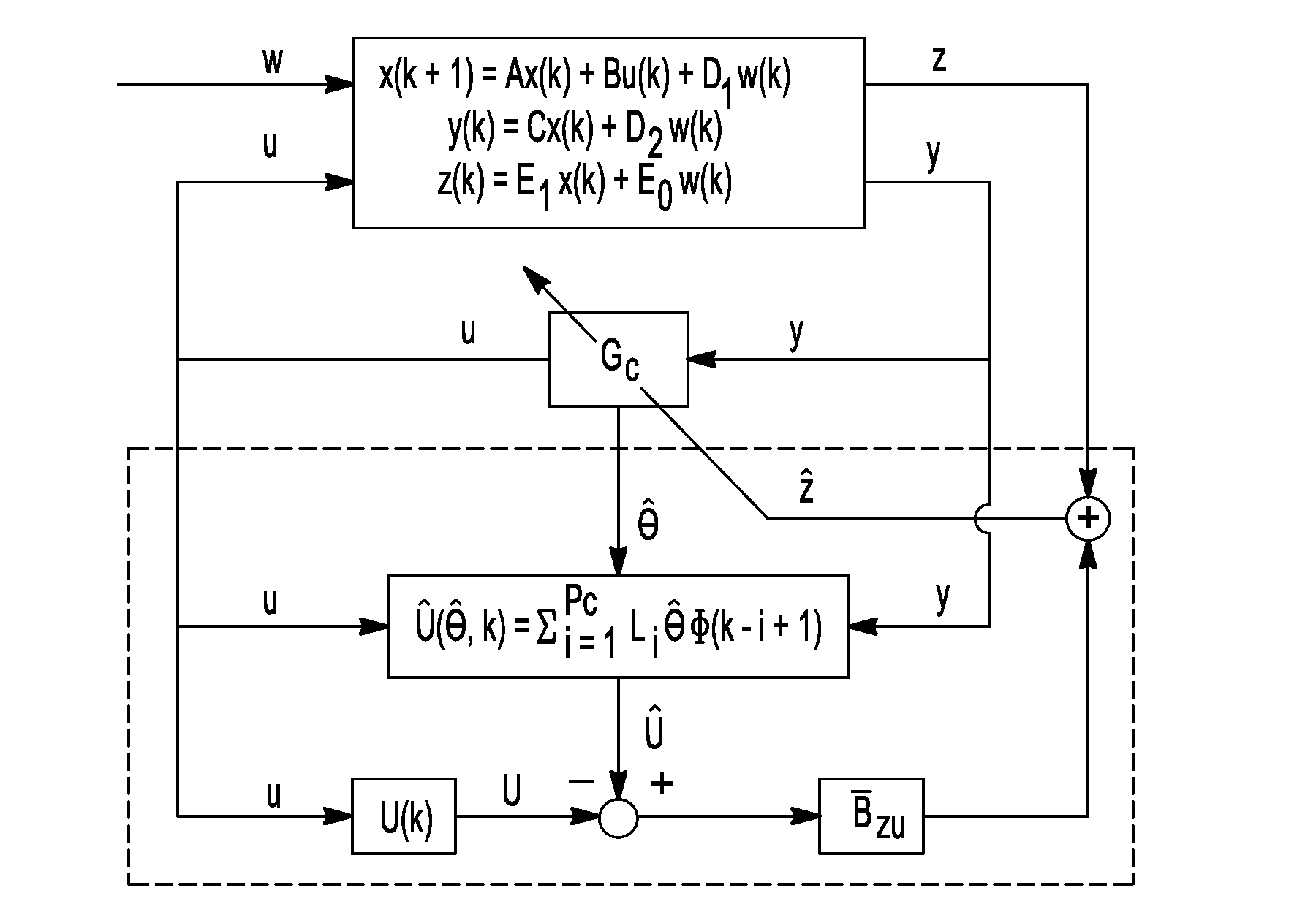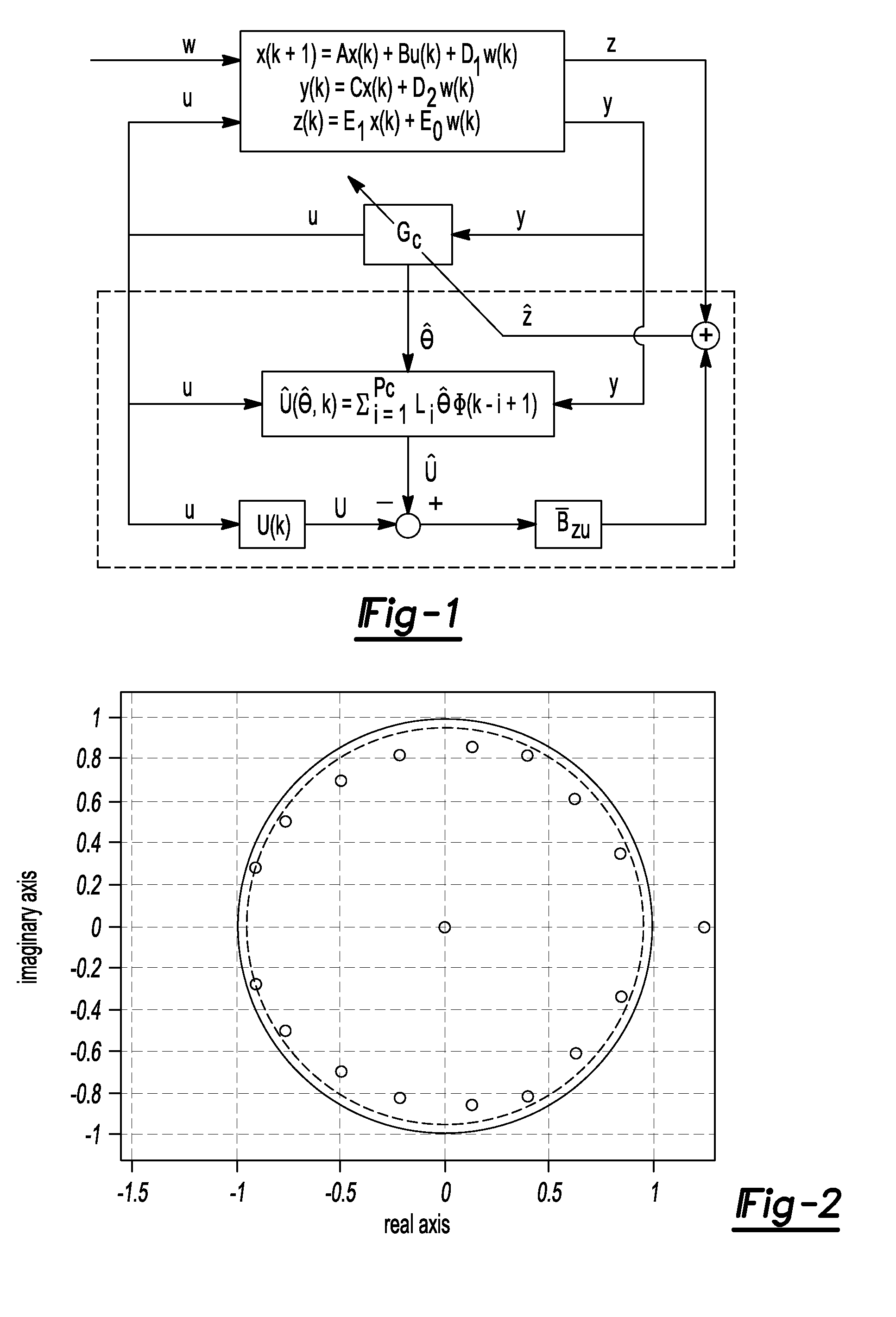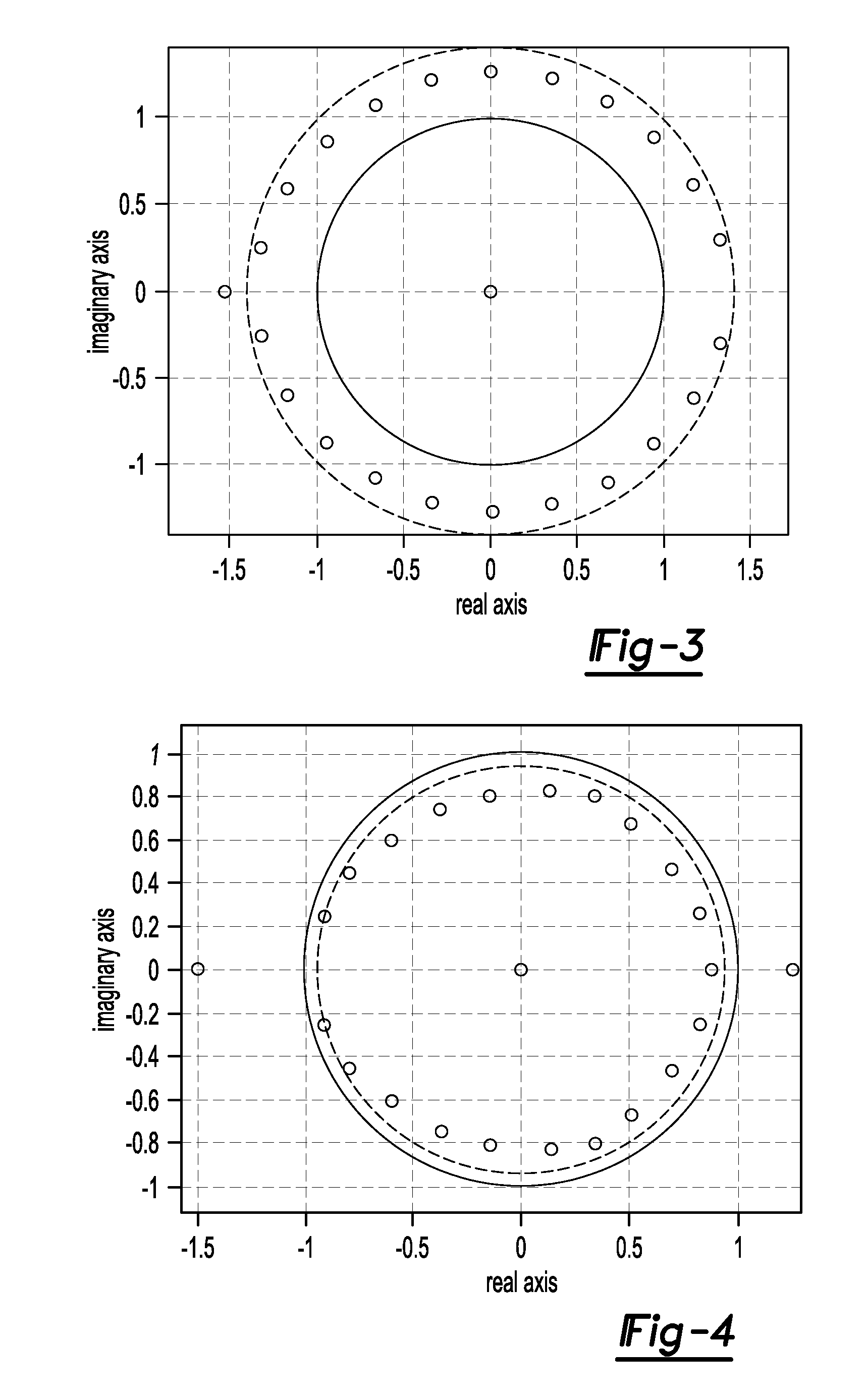Adaptive control based on retrospective cost optimization
a technology of adaptive control and cost optimization, applied in the direction of program control, electric programme control, instruments, etc., can solve the problems performance reducing the stability of the closed-loop system, so as to achieve the effect of reducing the stability margin
- Summary
- Abstract
- Description
- Claims
- Application Information
AI Technical Summary
Benefits of technology
Problems solved by technology
Method used
Image
Examples
numerical examples
Off-Nominal Cases
[0098]We now revisit the numerical examples of the preceding section to illustrate the response of the RCF adaptive control algorithm under conditions of uncertainty in the relative degree and Markov parameters as well as measurement noise and actuator and sensor saturation. In each example, the adaptive controller gain matrix θ(k) is initialized to zero. Unless otherwise noted, all examples assume x(0)=0.
[0099]Example 8.1 (Ex. 7.5 with Markov-parameter multiplicative error) Reconsider Example 7.5 with Markov-parameter multiplicative error. For controller implementation, we use the estimate {circumflex over (B)}ηB, where ηε is varied between 0.3 and 5. For i=1, . . . , r, the estimated Markov parameters Ĥi=CAi−1{circumflex over (B)} are used to construct Bzu given by (56). Taking nc=15, p=1, r=10, and α(k)≡1000, the closed-loop performance is compared in FIG. 17. In each case, the control is turned on at k=0, and the performance metric is given by
k0=Δmin{k≥9:110∑i=0...
PUM
 Login to View More
Login to View More Abstract
Description
Claims
Application Information
 Login to View More
Login to View More - R&D
- Intellectual Property
- Life Sciences
- Materials
- Tech Scout
- Unparalleled Data Quality
- Higher Quality Content
- 60% Fewer Hallucinations
Browse by: Latest US Patents, China's latest patents, Technical Efficacy Thesaurus, Application Domain, Technology Topic, Popular Technical Reports.
© 2025 PatSnap. All rights reserved.Legal|Privacy policy|Modern Slavery Act Transparency Statement|Sitemap|About US| Contact US: help@patsnap.com



